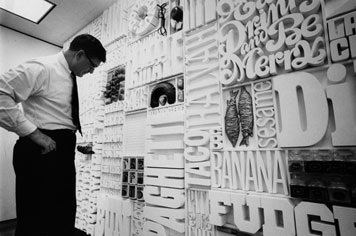Otimsan Hotel Malzemeleri



Lou Dorfsman ın “Gastrotypographicalassemblage” i CBS cafeteria, 1966
Kaynak: Design Observatory – Michael Bierut
Working as an in-house designer for a big corporation doesn’t sound glamorous, and staying in the same place for more than 40 years doesn’t sound like a path to career success. But Lou Dorfsman, who joined the Columbia Broadcasting System in 1946 and rose to become its vice president and creative director for advertising and design until his retirement in 1991, may have had the best job in the American design industry.
When I learned the sad news last week that Dorfsman had died at the age of 90, I pulled a book down from my shelf that I’ve referred through now and then through the years:Dorfsman & CBS: A 40-Year Commitment to Excellence in Advertising and Design. Flipping through its 216 pages, I was struck once more by the range and timelessness of the work illustrated inside. And I found an interesting passage, where authors Marian Muller and Dick Hess describe “the do-it-yourself education of Lou Dorfsman,” which began shortly after he joined the company as advertising assistant to the legendary Bill Golden, creator of theCBS Eye logo.
 Hızlı DESTEK 0541 243 2153
Hızlı DESTEK 0541 243 2153